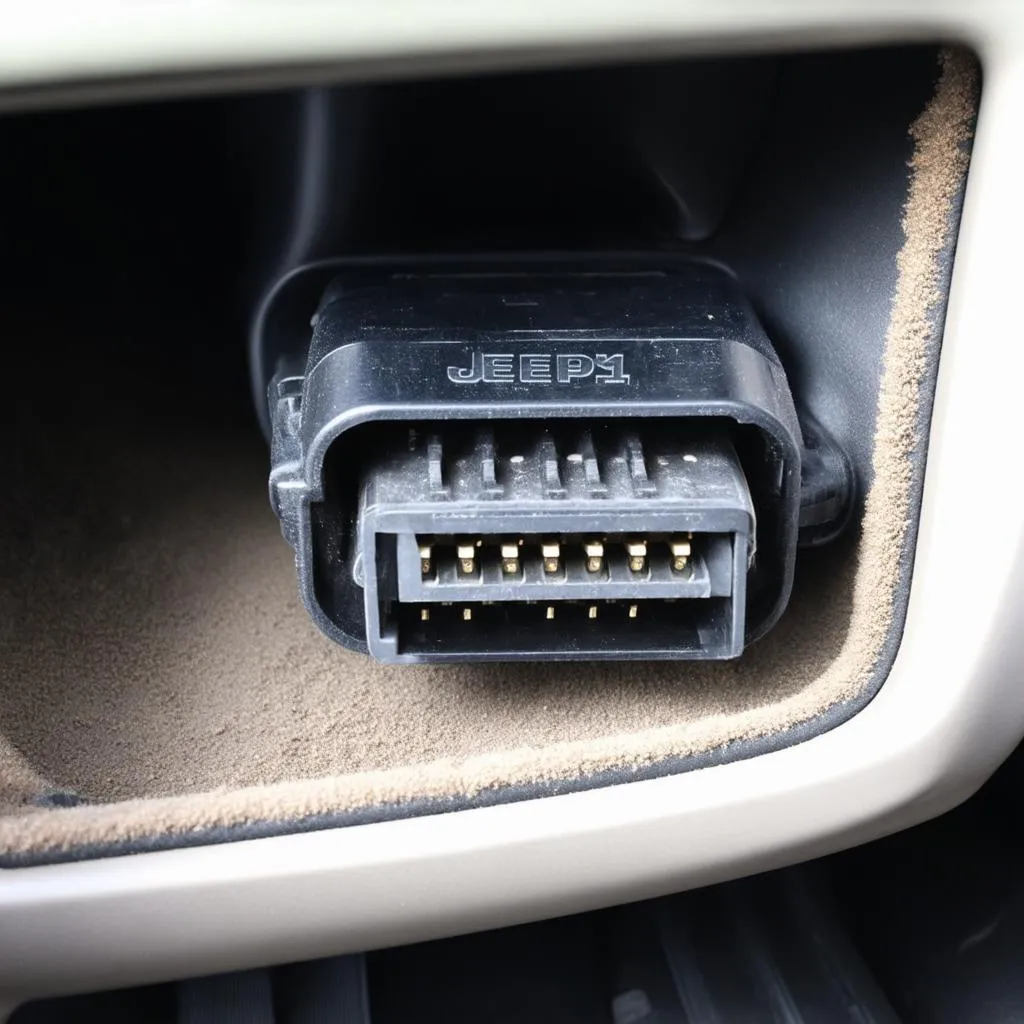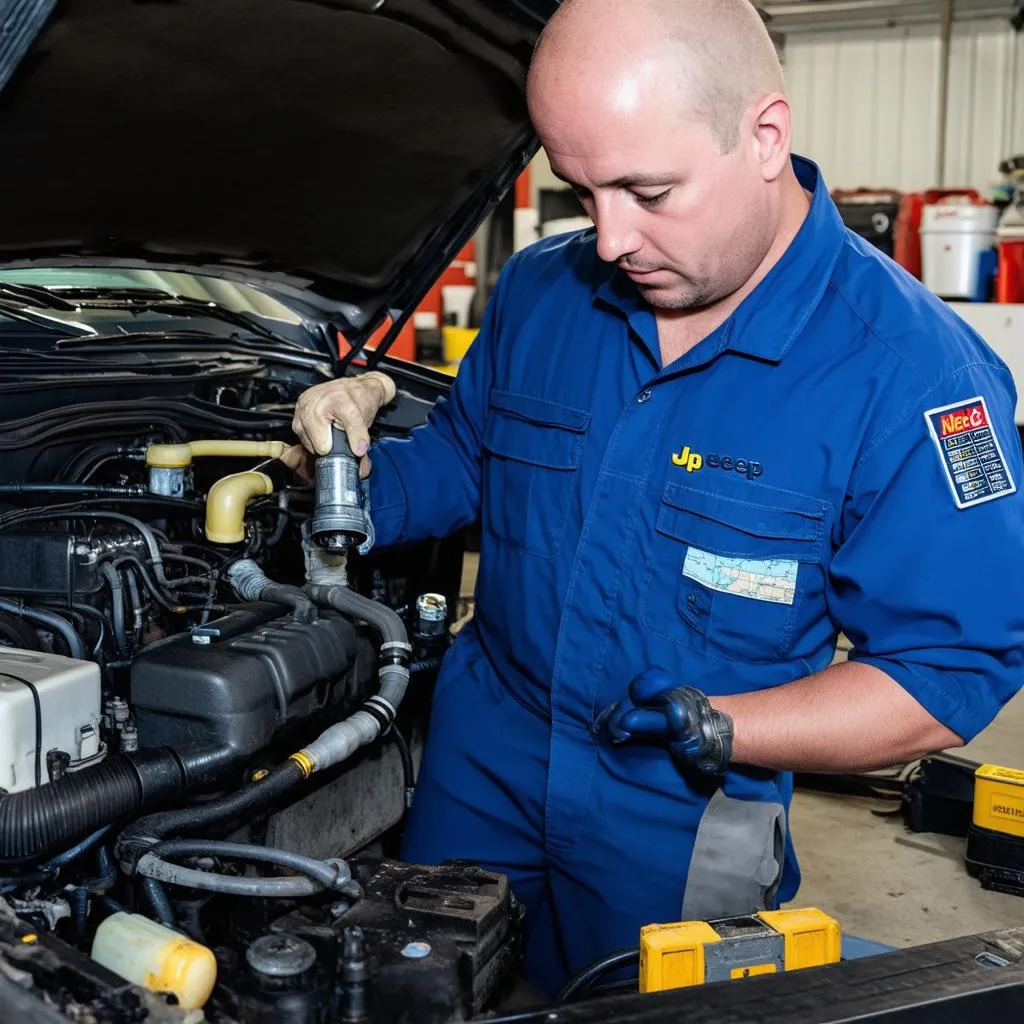“My trusty ’95 Jeep Cherokee suddenly started acting up, and the check engine light flashed a code 14. What in the world does that even mean?”
Sound familiar? Don’t worry, you’re not alone. Many Jeep Cherokee owners, especially those with the venerable 1995 model, have encountered this mysterious OBD 1 code 14. In this comprehensive guide, we’ll delve deep into what this code means, its potential causes, and how to get your Cherokee back on the road.
Understanding the Enigma: What is OBD 1 Code 14?
In the world of automotive diagnostics, OBD (On-Board Diagnostics) codes are like cryptic messages from your vehicle’s computer. They signal that something isn’t quite right. For your 1995 Jeep Cherokee, which uses the OBD 1 system, a code 14 specifically points to a problem with the MAP (Manifold Absolute Pressure) sensor circuit.
Think of the MAP sensor as your Cherokee’s “altitude gauge.” It measures the air pressure inside the intake manifold, providing crucial data to the engine control unit (ECU) for optimal fuel delivery and ignition timing.
Why Does it Matter? The Impact of a Faulty MAP Sensor
A malfunctioning MAP sensor can throw a wrench into your Cherokee’s performance, leading to:
- Rough idling: Imagine your Cherokee sputtering like an old coffee maker – not a pleasant experience!
- Hesitation or stumbling during acceleration: Trying to merge onto a busy highway with a hesitant engine can be downright dangerous.
- Decreased fuel economy: A misbehaving MAP sensor can turn your Cherokee into a gas-guzzler, draining your wallet faster than you’d like.
- Increased emissions: Environmental consciousness is crucial, and a faulty MAP sensor can lead to higher emissions.
Unraveling the Mystery: Possible Causes of Code 14
Now that you understand the significance of the MAP sensor, let’s investigate the usual suspects behind that pesky code 14:
- Faulty MAP sensor: Like any electronic component, the MAP sensor itself can wear out over time.
- Vacuum leaks: A leak in the vacuum lines connected to the MAP sensor can disrupt pressure readings.
- Wiring issues: Damaged, corroded, or loose wiring in the MAP sensor circuit can disrupt signal transmission.
- Faulty ECU: While less common, a malfunctioning ECU can misinterpret signals from the MAP sensor.
Seeking Answers: Troubleshooting Tips for Code 14
Before you rush to the mechanic, here are some DIY troubleshooting steps you can take:
- Visual inspection: Start by visually inspecting the MAP sensor, vacuum lines, and wiring for any obvious damage or disconnections.
- Check for vacuum leaks: A hissing sound or a loose vacuum hose can indicate a leak.
- Test the MAP sensor: You can use a multimeter to test the sensor’s electrical resistance.
- Consult a repair manual: For detailed instructions specific to your 1995 Jeep Cherokee, refer to a reputable repair manual.
Beyond the Technical: A Holistic Perspective
While technical know-how is essential, some car enthusiasts believe that maintaining a vehicle goes beyond mechanics. Just as a clean and organized living space promotes positive energy, a well-maintained vehicle can enhance your driving experience. Regularly cleaning your Cherokee’s interior and exterior, along with timely maintenance, can not only improve its performance but also create a more harmonious driving environment.
 Jeep Cherokee OBD1 Connector
Jeep Cherokee OBD1 Connector
Frequently Asked Questions
Can I still drive my Jeep Cherokee with a code 14?
While technically possible, it’s not recommended to drive your Cherokee for extended periods with a code 14. A malfunctioning MAP sensor can lead to reduced performance, poor fuel economy, and potential damage to other engine components.
How much does it cost to fix a code 14?
The cost of repair can vary depending on the underlying cause and labor rates in your area. A new MAP sensor typically costs between $50 to $150, while labor costs can range from $100 to $200.
Can I replace the MAP sensor myself?
If you’re comfortable with basic car maintenance, replacing the MAP sensor is a relatively straightforward DIY task. However, if you’re unsure, it’s always best to consult a qualified mechanic.
More Questions About Your Cherokee?
Have more questions about your 1995 Jeep Cherokee or other automotive conundrums? Check out these related articles:
- Understanding Jeep Cherokee OBD Codes
- Troubleshooting Common Jeep Cherokee Engine Issues
- Maintaining Your Jeep Cherokee for Optimal Performance
Need Expert Help? We’re Here for You!
Diagnosing and fixing car problems can be daunting. If you’re feeling overwhelmed or need expert assistance, don’t hesitate to reach out. Our team of automotive specialists is available 24/7 to provide guidance and support. Contact us via WhatsApp at +84767531508, and let us help you get your Jeep Cherokee back in top shape.
 Mechanic Inspecting Jeep Cherokee Engine
Mechanic Inspecting Jeep Cherokee Engine
In Conclusion: Keeping Your Cherokee Running Smoothly
Your 1995 Jeep Cherokee is a capable and reliable SUV, but like any vehicle, it requires proper care and attention. Understanding the meaning of OBD codes, such as code 14, can help you address issues promptly and keep your Cherokee running smoothly for years to come. Remember, a little preventative maintenance and timely repairs go a long way in ensuring a safe and enjoyable driving experience.